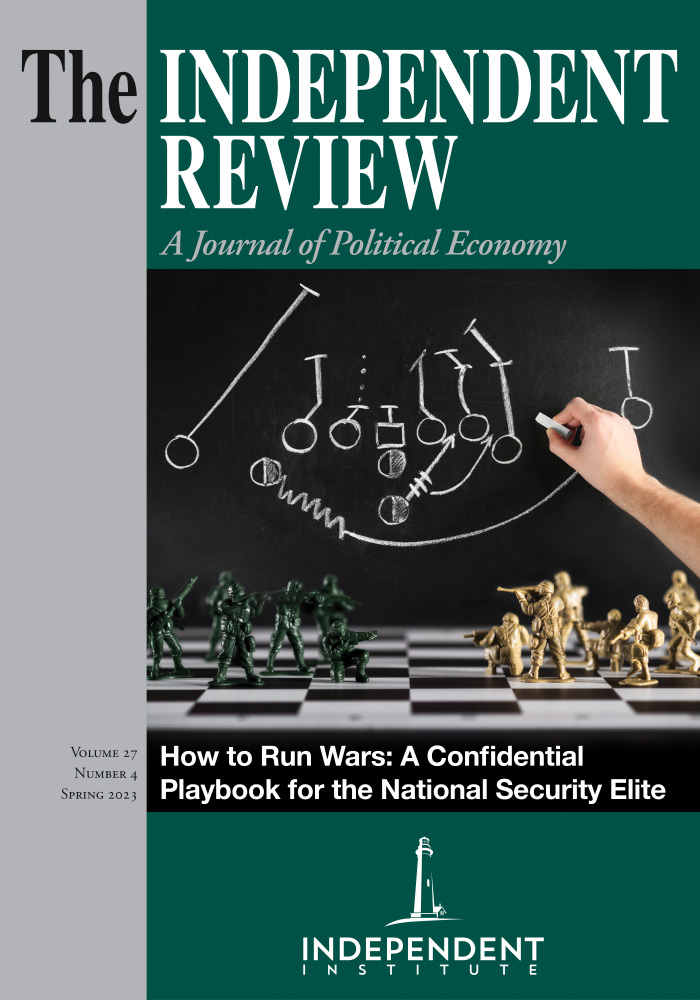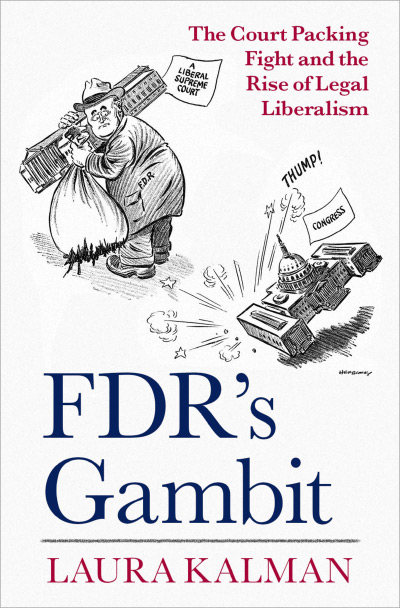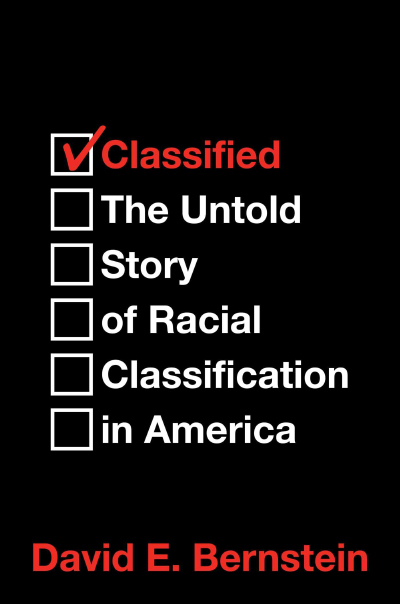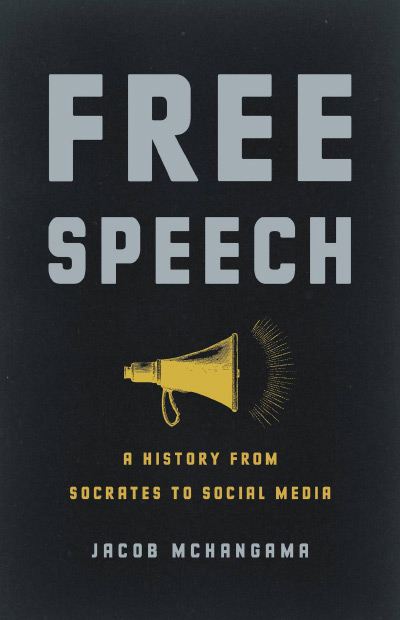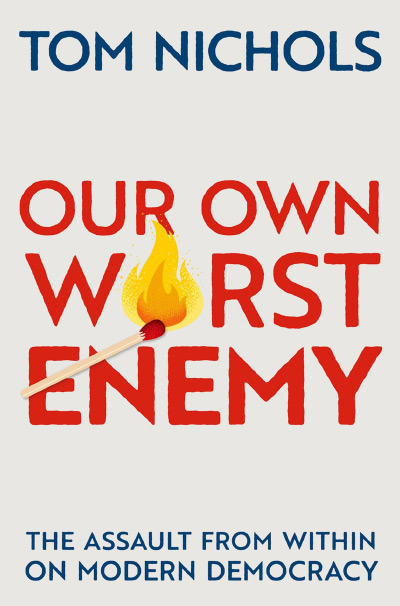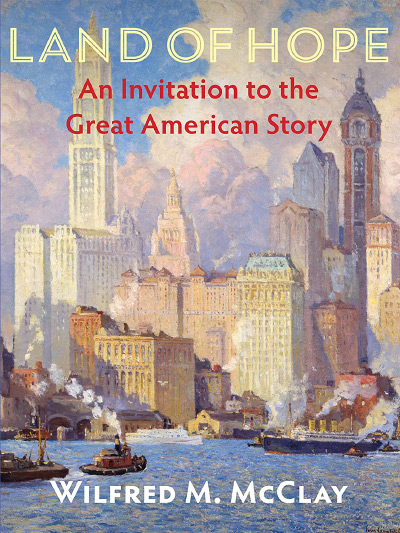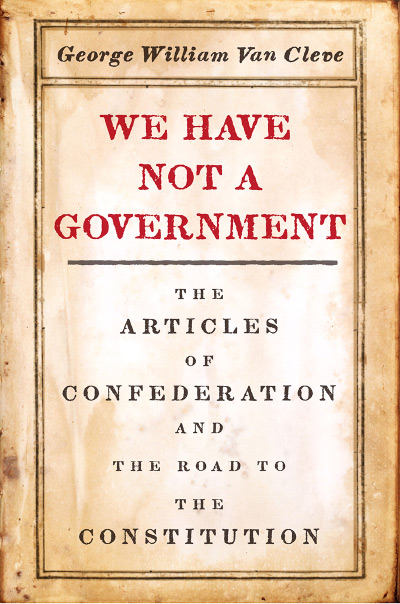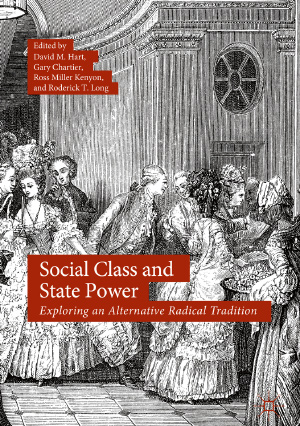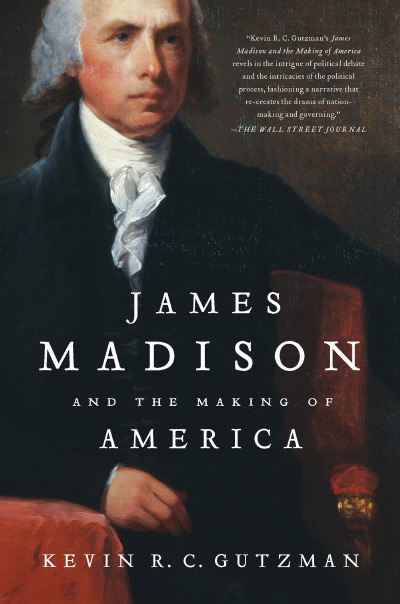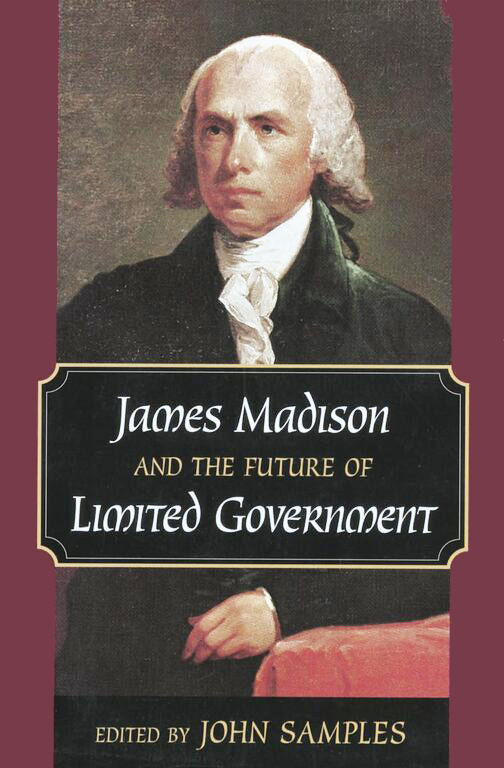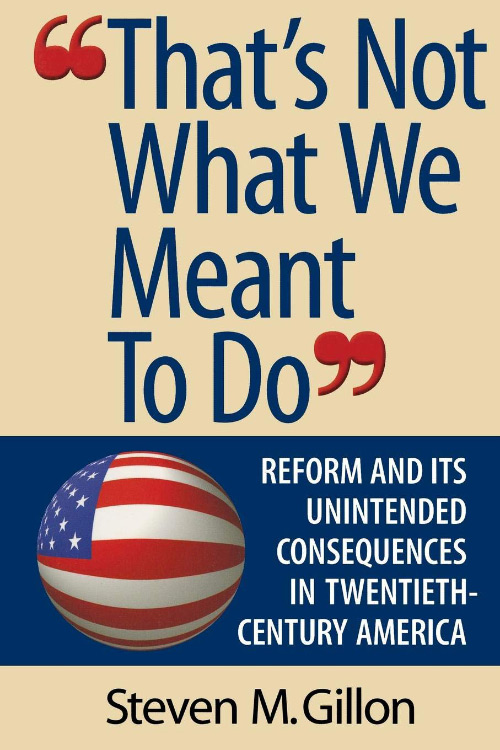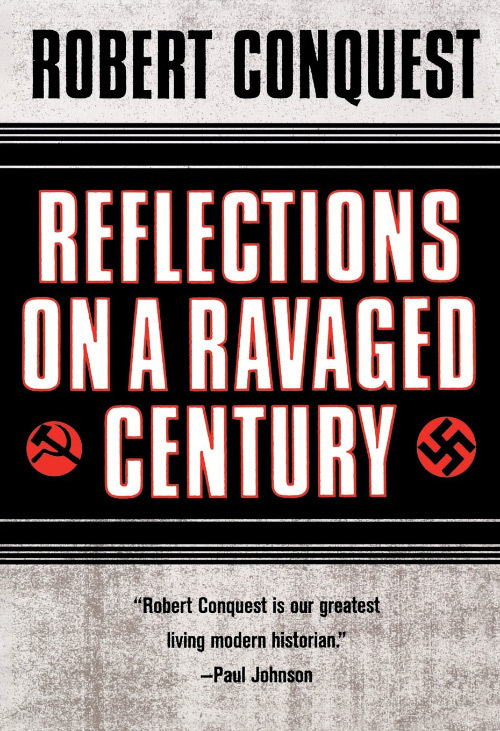The author, a “Distinguished Research Professor at the University of California, Santa Barbara, a member of the California Bar Association, and Past President of the American Society for Legal History,” according to the book’s flyleaf, begins her narrative by rehearsing the conventional wisdom about the relevant period one finds in “any U.S. history text:”
During Franklin Roosevelt’s first term [1933 – 1937], a liberal president and Congress confronted the “nine old men” of the Supreme Court, most of whom waged war against the New Deal’s push to end the reign of conservative laissez-faire. The “reactionary” elderly judges in the majority struck down statute after statute, often by razor-thin margins. Then in November 1936, FDR won the greatest Electoral College victory since James Monroe. Flush with success, he introduced a bill the following February that would reorganize the [federal] judiciary and help ... the “overworked” court by adding a new member for everyone who did not retire within six months of reaching age seventy, up to six additional justices.... A firestorm followed.... In July, 168 days after the battle had begun, the president lost it when the Senate recommitted his bill [to the chamber’s Judiciary Committee] by seventy to twenty. The magnitude of his failure made the bill look exceptionally foolish. (p. ix)
FDR’s Gambit purports to show that the conventional wisdom about the defeat of Roosevelt’s plan immediately to expand the number of Supreme Court justices to fifteen is wrongheaded, or at least seriously incomplete. Kalman agrees with David Kennedy that court packing was “a calculated risk, and not an unreasonable one” (p. 262); it “was no reckless error” (p. 303). That conclusion is based on the author’s reading of the historical record, especially the maneuvering that continued in the U.S. Senate over the fight’s 168 days—“largely a family feud between Democrats and an overwhelmingly popular president” (p. 258)—that mired the bill in a “state of uncertainty ... until July” (p. 259). Compromise nevertheless remained on the table throughout the protracted battle. “For some of March, [FDR’s] original bill looked strong; for the entire month, it looked as if the Senate would, with a collective sigh of relief, grant the president at least two extra judges.... Had Roosevelt signaled a willingness to accept half a loaf sooner in the fight, he might well have proven successful” (ibid.).
FDR’s unwillingness to negotiate with key senators joins other political steps missed along the way. One is his failure to consult anyone on Capitol Hill prior to submitting the court bill (pp. 241, 255)—“Roosevelt ... astonished not just the press but all Congress with his proposal” (p. 87). Another was the untimely death of majority leader Senator Joseph Robinson (D-Arkansas) on July 14, 1937, who very much wanted to be nominated to the Supreme Court (p. 88) (FDR apparently had twice promised him the next vacant seat) and who became responsible, by default, for steering the proposal through the chamber because the president had not selected “anyone to sponsor his bill” (p. 87). A third, perhaps fatal mistake was for the president initially and stubbornly to continue to justify court packing as a way of aiding doddery justices—“the most elderly court in the nation’s history” (p. 5), which included Louis Brandeis, a liberal icon then 80 years old—to cope with their heavy caseloads: the “bill cruelly branded judges and justices over the age of seventy as ‘senile’” (p. 103). That rationale was exploded in a letter from Chief Justice Charles Evans Hughes read by Senator Burton Wheeler at the Senate Judiciary Committee’s hearings demonstrating that “FDR’s argument about clogged [federal] courts and the [overburdened] Supreme Court was a canard[,]” thus allowing the bill’s foes to denounce FDR’s “disingenuousness and deceptiveness” and to dismiss his plan to add up to six Supreme Court justices “as a ‘sugar-coated’ act of ‘political trickery’” (p. 103). The plan suffered another blow on May 18, 1937, when Justice Willis Van Devanter, one of the “Four Horsemen [of the Apocalypse],” often joining the five-vote anti-New Deal Court majority, announced his decision to retire from the Supreme Court (p. 244), to be replaced at summer’s end by ultraliberal Senator Hugo Black (D-Alabama), a life member of the Ku Klux Klan (p. 249).
It was an open secret that court-packing (or its threat) was triggered by the president’s evident anger at the Court’s opposition, often by 5 – 4 margins, to New Deal programs like the National Industrial Recovery Act and the Agricultural Adjustment Act, which were in his view essential to economic relief, reform, and recovery from the depths of the Great Depression. Indeed, “the [C]ourt had held congressional legislation unconstitutional twelve times since FDR took office, three times yearly on average” (p. 63), relegating the nation, in the president’s own words, to “the horse-and-buggy definition of interstate commerce” (p. 35), a definition epitomized by Lochner v. New York, 195 U.S. 45 (1905), in which the Court struck down an 1895 state law limiting bakers, mostly immigrants at the time, to working at most ten hours per day or sixty hours per week.
The crux of Kalman’s book is her attempt to explain “when the ‘switch in time that saved nine’ occurred and the reasons for it” (p. x). The supposed “switch” is attributed to Associate Justice Owen Roberts, who had voted hitherto with the Court’s anti-New Deal majority of five to strike down a minimum wage law for women in Morehead v. New York ex rel. Tipaldo,298 U.S. 587 (1936) but reversed course in West Coast Hotel v. Parrish et al., 300 U.S. 379to sustain the constitutionality of a Washington State minimum wage law, a decision announced in spring 1937. No one, including Kalman, can know why Roberts changed course. The justices’ deliberations prior to casting votes are carried out in private and perhaps what is more important, Justice Roberts destroyed his own Supreme Court papers (p. 261). We do know two things, though: First, that Roberts later reconciled his two different votes in what is known as the “Roberts Memorandum” by emphasizing that the plaintiffs in Tipaldo had not asked the Court explicitly to overturn an earlier ruling (Adkins v. Children’s Hospital, 261 U.S. 525), handed down in 1923, that immunized private employment contracts against governmental interference, but had been asked to do so in Parrish. Second, Roberts cast his decisive Parrish vote to overturn Tipaldo in December 1936, at least two months before FDR submitted his court-packing plan to Congress (p. 282). Anything else is pure speculation; there is no “smoking gun” (p. 303).
Like Homer Cummings, Roosevelt’s appointee as Attorney General and a key player in the unfolding events, Kalman “worship[s] FDR” (p. 12), falsely crediting the New Deal with having “saved capitalism” (p. 47). (On p. 298, she emphasizes “the admiration of Roosevelt that shines through my narrative.”) She relies heavily on public opinion polls; newspaper editorials, which largely opposed the president’s reelection in 1936 as well as his court-packing plan; and other secondary sources in strained efforts to equate defenses of the pre-1937 Supreme Court with attacks on “democracy,” as if constitutional interpretations of legislative statutes were popularity contests. Another egregious error is to quote approvingly one commentator, who remarked that “the U.S. stands virtually alone, among constitutional democracies with well-established judicial review by independent courts, in providing neither for a retirement age nor for a limited term in office for its high court justices” (p. 277). But most of those other constitutional democracies follow Roman civil law rather than British common law traditions. Judges in the former ideally are functionaries with little discretion in “making” law, the promulgation of which is confined to rigid codes enacted by parliaments (for a summary of the relevant differences in legal regimes, see William F. Shughart II, 2018, “Gordon Tullock’s Critique of the Common Law,” Independent Review 23(2) [Fall]: 209 – 226).
Article III, Section 2 of the U.S. Constitution is silent on the number of justices comprising the Supreme Court. It was set at six in 1789, expanded to seven by President Jefferson in 1807, to nine in 1837, to ten by Abraham Lincoln in 1863, and then back to eight in 1866. The current nine-seat Court dates from 1869 (p. 67). So, FDR’s plan to “pack” the nation’s highest court with as many as six additional justices was both largely consistent with historical precedent and permissible without constitutional amendment. Not so for one of the many other reform proposals floated during the fight that would have required a supermajority of six justices to overturn legislation enacted by Congress (p. 150).
The elephant in the room Kalman ignores is the work of economic historians, such as Price Fishback, John Joseph Wallis, Lee Ohanian, and others (see, e.g., William F. Shughart II, 2011, The New Deal and Modern Memory, Southern Economic Journal 77(3) [January]: 515 – 542), who argue that the regime uncertainty (Robert Higgs, 2013, Crisis and Leviathan: Critical Episodes in the Growth of American Government, Oakland, Calif.: Independent Institute, especially chapter 8; 2009, Depression, War, and Cold War: Challenging the Myths of Conflict and Prosperity, Oakland, Calif.: Independent Institute) produced by FDR’s self-described “bold, persistent [policy] experimentation” (quoted in H. W. Brands, 2008, Traitor to His Class: The Privileged Life and Radical Presidency of Franklin Delano Roosevelt, 241, New York: Doubleday,) both deepened and prolonged the Great Depression.
In the end, Kalman essentially confirms the conventional wisdom:
I agree with FDR that the court bill and his tough stance on it helped get what he wanted. The consternation over Tipaldo, the size of his re-election victory, and his threat to enlarge the court may have helped motivate the justices to produce more generous interpretations of the commerce clause, and the taxing and spending power in the spring of 1937. In my view, the case that “politics” influenced the justices is strong. (p. 260)
But that conclusion is just one of many interpretations of the events of 1936 – 1937. Treating the period as a watershed in the Supreme Court’s jurisprudence and Justice Roberts’s “switch in time” as one “that saved nine” ignores the transition that was underway before 1937, during which the Court had upheld the constitutionality of some important New Deal programs and policies, such as the Securities and Exchange Commission, the Tennessee Valley Authority, and FDR’s unilateral abrogation of clauses in private contracts stipulating that payment be made in hard money. Moreover, the president’s court-packing plan can be seen as a needless and politically counterproductive effort to bend the Supreme Court to his will. Within months of its announcement, Willis Van Devanter had retired from the bench, to be replaced by a more compliant Hugo Black, whose confirmation, as a matter of Senate courtesy, never was in doubt despite his Klan connections. The opportunities that soon would unfold for appointing four more new justices ensured that a supermajority of the Court would rule in favor of progressive legislation no matter how far beyond the government’s constitutional constraints that legislation might have been considered beforehand. The Rooseveltian constitutional revolution might have been delayed a year or two had Roberts not somersaulted—a charge he denied—in the spring of 1937, but in any event the president’s constitutional appointment powers rendered a revolution towards “legal liberalism” (code for a “living Constitution” whose meaning is malleable over time) inevitable (see William F. Shughart II, 2004, “Bending before the Storm: The U.S. Supreme Court in Economic Crisis: 1935 – 1937,” Independent Review 9(1) [Summer]: 55 – 83).
To be sure, like all institutions of human design, the federal judiciary faces external political pressures from the executive and legislative branches of government (William F. Shughart II and Robert D. Tollison, 1998, Interest Groups and the Courts, George Mason Law Review 6, [Summer]: 953 – 969). Despite 303 pages of text and just short of 100 pages of single-spaced footnotes in very small type, readers of FDR’s Gambit learn very little about 1937 that is new. Like Shakespeare’s “undiscovered country,” the terrain of “Roberts Land” (p. 183) remains—and is likely to remain—a mystery.
| Other Independent Review articles by William F. Shughart II | ||
| Winter 2022/23 | The Chevron Doctrine: Its Rise and Fall, and the Future of the Administrative State | |
| Spring 2020 | The Naked Emperor: Politics without Romance in The Calculus of Consent | |
| Fall 2018 | Gordon Tullock’s Critique of the Common Law | |
| [View All (9)] | ||

